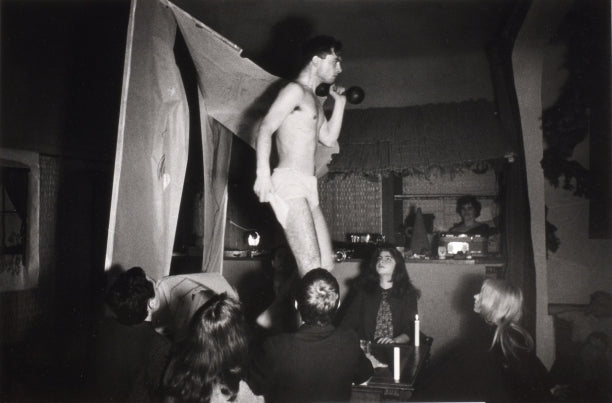The history of Windmühlgasse 16
Windmühlgasse 16 has been the headquarters of KAYIKO since 1998. The history of the house goes back much further and has more to do with the Viennese avant-garde than expected.
Between 1666 and 1670 the house was built on a vineyard of the cathedral chapter in the Vienna suburbs between Glacis and Limes (belt), today's 6th district. The baroque building was damaged during the Turkish siege in 1683 and then expanded with the mansard roof that still exists today.

From 1732, Imperial Countess Maria Karolina von Fuchs-Mollard, who later became Empress Maria Theresia, lived here. Maria Theresia is said to have often visited the Imperial Countess, who she called the “Fox”, for breakfast in the hidden garden. In the hall there is still a stone bench with legs shaped like lion paws, on which Maria Theresa probably sat.

In 1869 the house got a new facade designed by the architect Franz von Neumann jr. This facade still adorns Windmühlgasse 16 today.
In 1912, the artists' club "Alte Welt" bought the house and resided here until it was dissolved in 1960. The founders of the club were the sculptor Arthur Strasser (the Marc Anton sculpture next to the Vienna Secession comes from him) and the painter Alexander Demetrius Goltz .
From 1958, the “1. literary cabaret" around the "Wiener Gruppe". Avant-garde artists such as HC Artmann, Oswald Wiener, Konrad Bayer, Friedrich Achleitner, Gerhard Rühm and Hermann Hendrich performed here. Franz J. Hubmann photographed the performances. A Heuriger was installed in the garden for the breaks.

Presentation "mens sana in corpore sano" of the 1st literary cabaret - photo Franz J. Hubmann - source mumok.at
Finally, in 1998, KAYIKO opened the first store with an adjoining studio at Windmühlgasse 16. Back then, you could only get to KAYIKO via the house entrance and the hallway.
In 2000 the KAYIKO studio moved to the second floor. In 2003, KAYIKO took over the business of the neighboring upholsterer, connected the entire ground floor to the new KAYIKO store and finally got its own entrance from the street. The avant-garde has its place again at Windmühlgasse 16.

